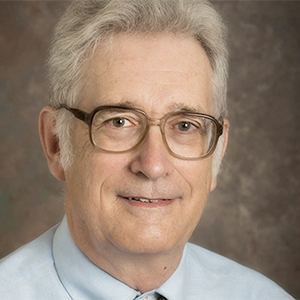Roberta F. Colman (1938 – 2019)
Roberta (Bobbie) Colman, Willis F. Harrington professor emerita of chemistry and biochemistry at the University of Delaware, joined what then was the UD chemistry department in 1973 as its fifth biochemist and remained there until her retirement in 2009.
In 1985, Bobbie became the first woman to receive the Francis Alison Award, UD’s highest faculty honor, and the university awarded her an honorary doctor of science degree at commencement in 2014. Her honorary degree citation recognized her for her roles as a revered educator and prolific researcher and also saluted her work in mentoring women and minority students.
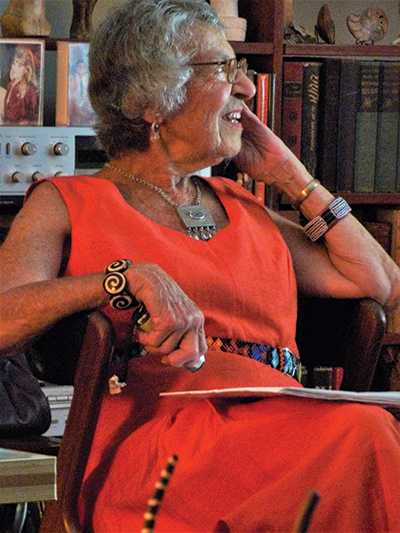 Pictured here in June 2012, Bobbie Colman had a colorful fashion sense.Paul Kende
Pictured here in June 2012, Bobbie Colman had a colorful fashion sense.Paul Kende
The citation concluded, “Your pioneering undoubtedly changed and enriched the scientific world in academe; it also has enriched the larger society because of the many contributions that you have made to your field.”
Bobbie’s distinguished career in research started in high school when she received a Westinghouse Science Talent Search Award. She graduated from Radcliffe College summa cum laude and went on to graduate school at Harvard University, where she earned a Ph.D. under the direction of the renowned physical organic chemist Frank Westheimer. After postdoctoral fellowships at the National Institutes of Health and Washington University in St. Louis, she joined the faculty in the department of biological chemistry at Washington University in 1966. A year later, she became an assistant professor in the department of biological chemistry at Harvard Medical School. She left Harvard as an associate professor in 1973 to become a full professor of biochemistry at UD.
During her highly productive career, Bobbie published more than 260 articles in journals such as the Journal of Biological Chemistry, Biochemistry, Archives of Biochemistry and Biophysics, Nature Genetics and Protein Science. Many of her publications dealt with the structure of the active sites of enzymes and the function of various amino acid side chains in enzyme catalysis. She pioneered the use of particular reactive nucleotide analogs as affinity labels to probe enzyme active sites. As a world authority on the structure and function of nicotinamide adenine dinucleotide-linked and nicotinamide adenine dinucleotide phosphate-linked isocitrate dehydrogenases and other enzymes such as glutamate dehydrogenase, pyruvate kinase, glutathione S-transferase and adenylosuccinate synthase, she established numerous collaborations and received many honors.
Bobbie was a fellow of the American Association for the Advancement of Science and a member of numerous professional societies. Among other positions, she was treasurer of the American Society for Biological Chemists (the precursor of the American Society for Biochemistry and Molecular Biology) from 1981 to 1985. She served on the ASBMB Executive Council from 1993 to 1996, and in 1996 she received the Herbert A. Sober Award from the ASBMB for scientific achievement. She served as chair of the division of biological chemistry of the American Chemical Society from 1998 to 2000. She was on the editorial board of Archives of Biochemistry and Biophysics for 27 years, including 17 years as an executive editor. She was an associate editor of the Journal of Protein Chemistry for six years and served on the editorial boards of several other journals including the Journal of Biological Chemistry and Protein Science.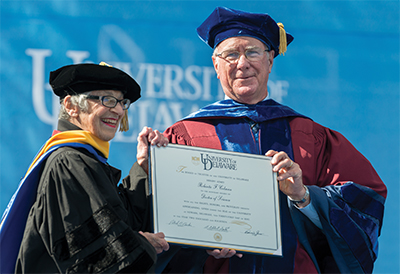 University of Delaware Board of Trustees Chairman Gil Sparks presents Bobbie Colman with an honorary doctor of science degree at the university’s 2014 commencement ceremony.Evan Krape
University of Delaware Board of Trustees Chairman Gil Sparks presents Bobbie Colman with an honorary doctor of science degree at the university’s 2014 commencement ceremony.Evan Krape
Throughout her career at UD, Bobbie maintained a well-funded research group of about 10 people, including research assistants, undergraduates, graduate students, postdoctoral fellows and visiting faculty members. Nearly 30 graduate students completed their dissertations under her guidance. Many of these associates have gone on to distinguished careers elsewhere. In addition, she was the program director of UD’s NIH-funded chemistry-biology interface graduate program from 1993 to 2009. Students in her laboratory received excellent training. In addition to her graduate students and postdoctoral fellows, many of the undergraduates who worked in her laboratory became co-authors on scientific publications.
Graduate students and undergraduates from over the years remember Bobbie as their teacher in graduate-level biochemistry core courses. She also taught elementary biochemistry for nonmajors and mechanisms of enzyme regulation.
After being one of the only women in her college science classes and then discovering early in her career a large salary discrepancy between herself and similarly qualified male faculty members, Bobbie took a special interest in nurturing and enabling the careers of women and underrepresented minority scientists. She did this through mentoring students in her own laboratory and through service on national committees such as the Committee on Women in Biochemistry and the Educational Affairs Committee of the ASBMB.
Bobbie enjoyed traveling. With her husband, Robert, she used summer vacations to travel the world from the Antarctic to Asia and Africa. In each country, she took in the local culture and natural history and returned with photographs to share. Her fashion sense was very colorful and often extended to clothing acquired on her travels.
After her retirement in 2009, Bobbie regularly attended classes at UD’s Osher Lifelong Learning Institute, where she continued to cultivate her many interests.
She is survived by her husband; her children, Sharon and David; and her two grandchildren, Lexi Greenberg and Jason Greenberg.
 To their friends, Bobbie and Bob Colman were “joined at the hip,” attending movies, concerts and plays together, as in this April 2013 photo.Paul Kende
To their friends, Bobbie and Bob Colman were “joined at the hip,” attending movies, concerts and plays together, as in this April 2013 photo.Paul Kende
Bobbie Colman’s influence
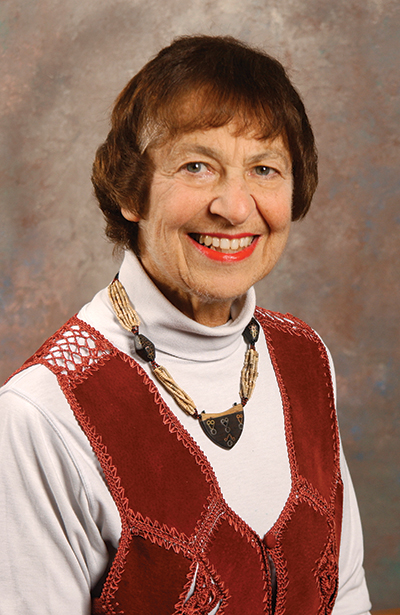 Bobbie Colman, pictured here in 2004, took a special interest in nurturing and enabling the careers of women and underrepresented minority scientists.Kathy F. AtkinsonMayura Dange, former graduate student: “She is the reason I am what I am … Not only a U.S.-graduated scientist, but also a feminist, a travel lover, a hobbyist photographer …. Her scientific excellence is all over the web, but her personality was far beyond science labs and books …. She was a constant learner, who after her retirement at the age of 71, started taking music appreciation and architecture classes at the university. She would subtly emphasize how a woman has to take extra efforts to prove herself while strongly reminding us that being a woman does not entitle you to any freebies or sympathy. There are many life lessons I learned under her guidance, but more personal to me was when I had tried and failed over and over in one part of my project. She was someone who would never give up, but she told me ‘sometimes we have to let go of something that is not working out and focus on what is working. It’s not giving up, it’s being practical.’”
Bobbie Colman, pictured here in 2004, took a special interest in nurturing and enabling the careers of women and underrepresented minority scientists.Kathy F. AtkinsonMayura Dange, former graduate student: “She is the reason I am what I am … Not only a U.S.-graduated scientist, but also a feminist, a travel lover, a hobbyist photographer …. Her scientific excellence is all over the web, but her personality was far beyond science labs and books …. She was a constant learner, who after her retirement at the age of 71, started taking music appreciation and architecture classes at the university. She would subtly emphasize how a woman has to take extra efforts to prove herself while strongly reminding us that being a woman does not entitle you to any freebies or sympathy. There are many life lessons I learned under her guidance, but more personal to me was when I had tried and failed over and over in one part of my project. She was someone who would never give up, but she told me ‘sometimes we have to let go of something that is not working out and focus on what is working. It’s not giving up, it’s being practical.’”
Anastasia Thévenin, doctoral student: “Rest in peace, dearest Dr. Colman — my Ph.D. adviser. I would not be where I am today without your help and guidance. You were the kindest, most caring person I knew, and your positivity was my guiding light during my Ph.D. You will always be the kind of scientist and a woman I will aspire to be.”
Mark Segall, former postdoctoral researcher: “Dr. Colman was an ideal mentor, extraordinarily knowledgeable, but also very willing to consider and discuss the ideas of scientists at earlier stages of their careers. She provided an environment that brought out the very best in her graduate students and postdocs. There was never a single day that I did not feel supported, encouraged and eager to move ahead with my project and determine the outcome of the next experiment. Even years after I left her laboratory, Dr. Colman remained extremely supportive and an enduring role model to me.”
Don Dennis, a faculty colleague for many years, remembers a conversation with a visiting speaker who noted that Dr. Colman was such a competent scientist and that she only talked about substantive issues. The visitor then wondered if she ever engaged in small talk. Dennis responded that she did, but she never initiated it because “she had more respect for others’ time than they did for themselves.” Dennis also noted that since the age of 17, Roberta routinely got and did not need more than five hours of sleep a night.
Judy Voet, who, with her husband, Don, and Liz and Ed Thornton and Frances and Paul Kende, was a close personal friend of Bobbie and Bob Colman, writes, “To us, they were joined at the hip. They took courses and studied together, took trips together, went to movies, concerts and plays together and gave wonderful dinner/slide-shows of their travels together. They even created a joint out-going phone message/greeting! Bobbie was a wonderful, creative cook and often coordinated meals to go with their travel presentations, with Bob being primarily the sous chef. But with the slide shows that ‘togetherness’ ended. They were each fiercely protective of their own photos, and we often wound up with a two-act show!”
Bobbie’s daughter, Sharon Greenberg, writes, “My mother was a person with a true love of life, discovery of the world and learning. She was a very positive, optimistic individual who instilled in me a passion for travel and learning. Her grandchildren loved her excitement and enthusiasm. We miss her immensely.” 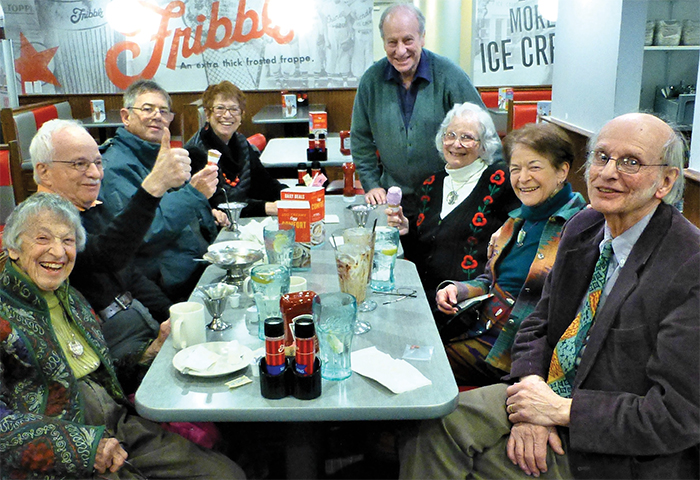 Enjoying a meal together in February 2019 are, from left, Bobbie and Bob Colman, Don and Judy Voet, Paul and Frances Kende, and Liz and Ed Thornton.Courtesy of Judith G. Voet
Enjoying a meal together in February 2019 are, from left, Bobbie and Bob Colman, Don and Judy Voet, Paul and Frances Kende, and Liz and Ed Thornton.Courtesy of Judith G. Voet
Enjoy reading ASBMB Today?
Become a member to receive the print edition four times a year and the digital edition monthly.
Learn moreGet the latest from ASBMB Today
Enter your email address, and we’ll send you a weekly email with recent articles, interviews and more.
Latest in People
People highlights or most popular articles

Designing life’s building blocks with AI
Tanja Kortemme, a professor at the University of California, San Francisco, will discuss her research using computational biology to engineer proteins at the 2026 ASBMB Annual Meeting.
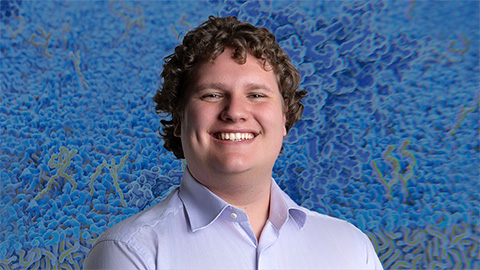
Jordahl named Gilliam Fellow
He will receive three years of funding to support his thesis research.

Bibel named assistant professor
She began her position at Loyola Marymount University in August 2025.
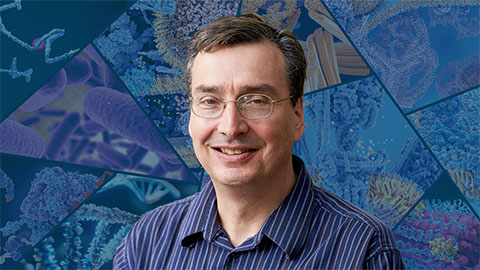
Unraveling the language of histones
Philip Cole presented his research on how posttranslational modifications to histones are involved in gene expression and how these modifications could be therapeutically targeted to treat diseases like cancer.
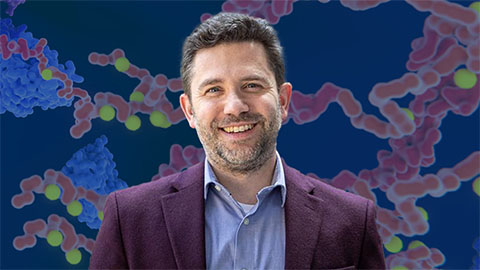
Cotruvo named Blavatnik award finalist
He received a $15,000 prize and was honored at a gala in October.
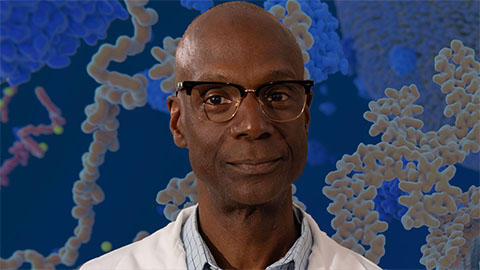
Phosphatases and pupils: A dual legacy
Yale professor Anton Bennett explores how protein tyrosine phosphatases shape disease, while building a legacy of mentorship that expands opportunity and fuels discovery in biochemistry and molecular biology.

